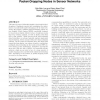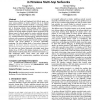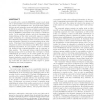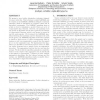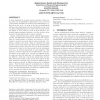SASN
2006
ACM
14 years 5 months ago
2006
ACM
In a large sensor network, in-network data aggregation, i.e., combining partial results at intermediate nodes during message routing, significantly reduces the amount of communic...
SASN
2006
ACM
14 years 5 months ago
2006
ACM
Node misbehavior in wireless ad hoc networks leads to sudden unpredictable changes in network topology, resulting in fluctuation of traffic load and capacity for already existin...
SASN
2006
ACM
14 years 5 months ago
2006
ACM
We investigate the design space of sensor network broadcast authentication. We show that prior approaches can be organized based on a taxonomy of seven fundamental proprieties, su...
SASN
2006
ACM
14 years 5 months ago
2006
ACM
This paper focuses on defending against compromised nodes’ dropping of legitimate reports and investigates the misbehavior of a maliciously packet-dropping node in sensor networ...
SASN
2006
ACM
14 years 5 months ago
2006
ACM
Denial-of-Service (DoS) and Distributed DoS (DDoS) attacks can cause serious problems in wireless networks due to its limited network/host resources. Attacker traceback is a promi...
SASN
2006
ACM
14 years 5 months ago
2006
ACM
SASN
2006
ACM
14 years 5 months ago
2006
ACM
In a mobile ad hoc network (MANET), a source node must rely on intermediate nodes to forward its packets along multihop routes to the destination node. Due to the lack of infrastr...
SASN
2006
ACM
14 years 5 months ago
2006
ACM
Wireless sensor networks are typically deployed to measure the information field, rather than create an information field. However, by utilizing the radio on sensor nodes, it is...
SASN
2006
ACM
14 years 5 months ago
2006
ACM
We present a novel outlier elimination technique designed for sensor networks. This technique is called RANBAR and it is based on the RANSAC (RANdom SAmple Consensus) paradigm, wh...
SASN
2006
ACM
14 years 5 months ago
2006
ACM
A great challenge in securing sensor networks is that sensor nodes can be physically compromised. Once a node is compromised, attackers can retrieve secret information (e.g. keys)...



